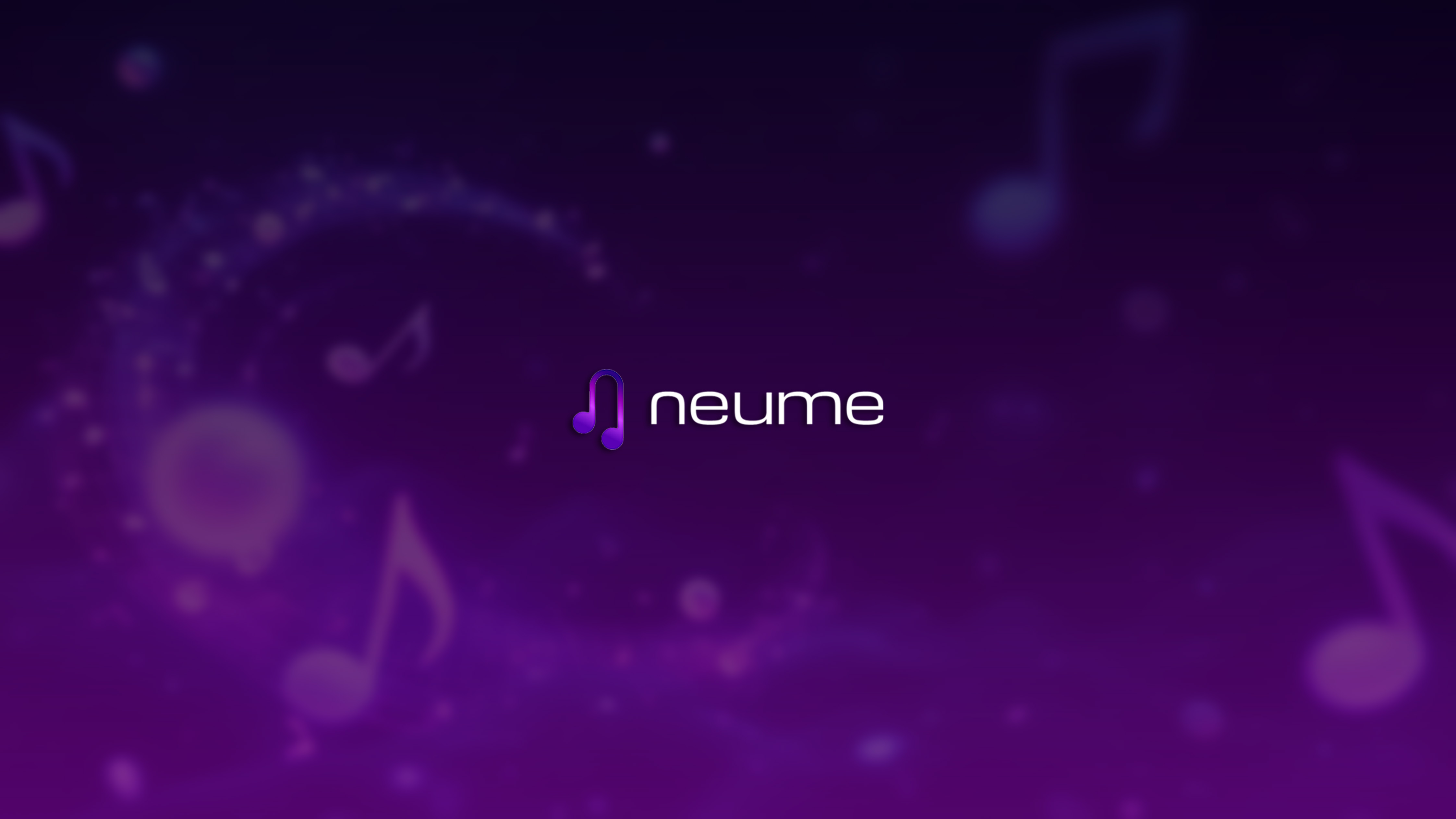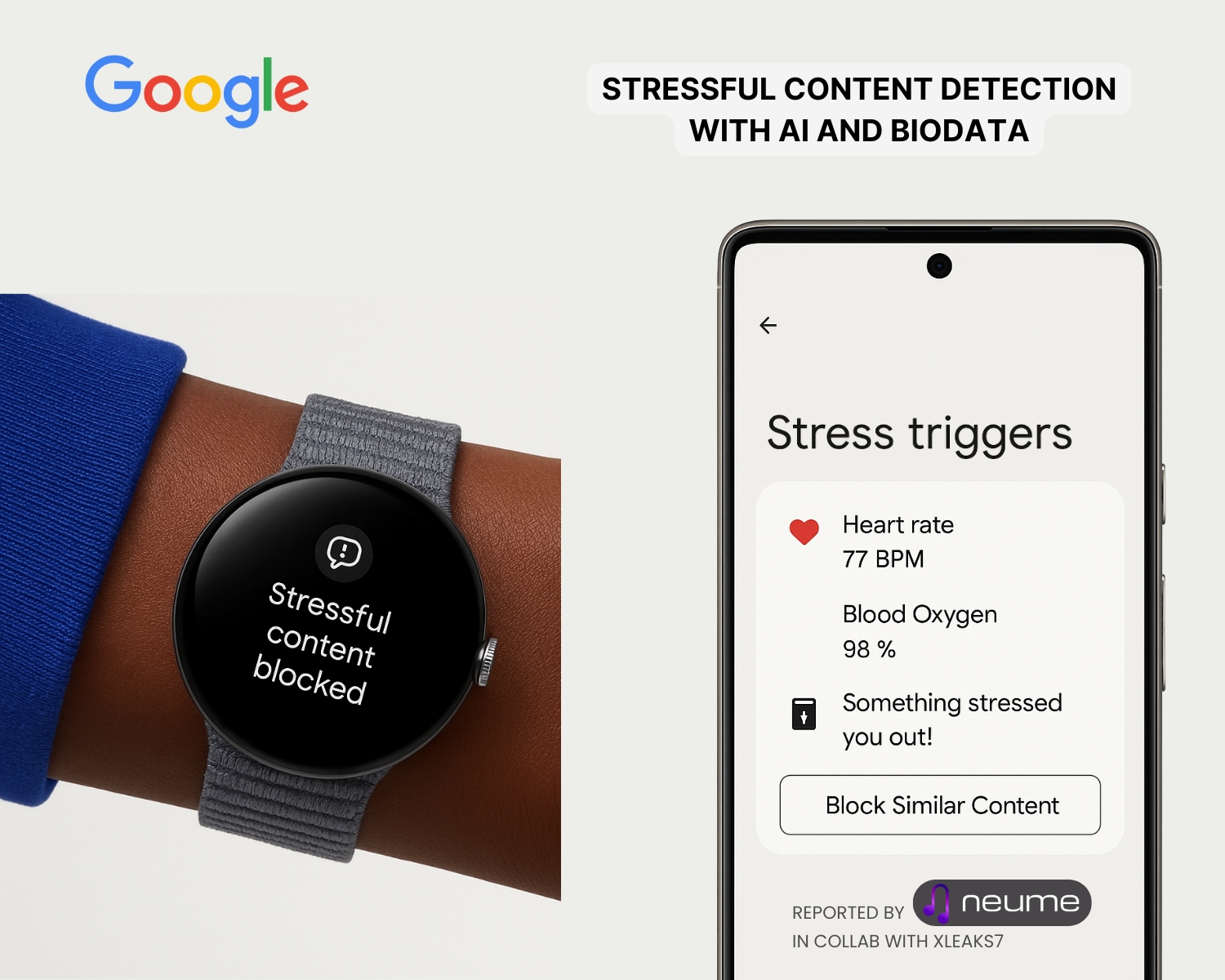August 27, 2025
Google Wants to Detect Stress Content With AI and Bio-Data

Dennis Orlov

People consume huge amounts of digital content every day (social media, videos, news, etc.), and some of this content can unknowingly cause stress, anxiety, or negative health effects.
Right now, users don’t have a good way to know which content triggers stress or to automatically block such content while protecting their privacy.
Thanks to our collab with David from @xleaks7, we spotted the patent that seems to be a solution to the stressful content you consume.

AI-Powered Stressful Content Detection Based On Bio-Data | Image: Neume
The Problem
Current health apps can track activity, sleep, or screen time, but they don’t understand what exactly is stressing us out.
For example, two people may both spend two hours on social media, but only one of them feels anxious because of the type of content they see.
This patent addresses that gap by linking stress signals from our bodies, like heart rate or skin response, to the exact content we’re viewing at that moment.
By doing so, it can identify hidden stress triggers that often go unnoticed.

Once stressful content is detected, you can skip, block or blacklist a whole app | Image: Neume
AI and Bio-Data Powered Solution
The main value of this patent is in how it uses AI together with your body data. It doesn’t just count how long you use your phone, it looks at what exactly you see and how your body reacts to it.
Here’s how AI helps:
-
Reading text mood: AI looks at words on screen and decides if they feel positive, negative, scary, or aggressive
-
Recognizing images and videos: It can tag what you’re watching, for example, “funny clip,” “news about war,” or “sports match”
-
Grouping topics: AI sorts content into themes like news, politics, or entertainment, so it can notice which topics often raise your stress
-
Finding patterns with body signals: Your heart rate, sleep quality, or skin stress signals are turned into numbers. AI then compares these numbers with the content to see connections, like “heart rate goes up when watching late-night news”
-
Learning about you: Over time, AI adjusts to your personal stress triggers while keeping all data private on your device
Instead of warning you only after you get stressed, the system learns to predict stress in advance, so you can choose to pause, skip, or prepare for what’s coming.
Highlights
Here are some of the main features described in the patent:
-
Whitelisted Apps Only – The system only analyzes apps you approve, such as YouTube, a web browser, or news apps. Private apps like email or banking can stay untouched
-
Content + Health Match – When your wearable detects stress (e.g., a heart rate spike), the system records what you were viewing at that moment
-
AI Analysis – It uses machine learning models to understand the content:
-
Sentiment classifier (positive/negative tone)
-
Topic modeler (identifies categories like sports, war, politics)
-
Media classifier (labels videos/images such as “dog,” “horror,” “technology”)
-
-
Numerical Scoring – Emotions and topics get converted into numbers, making it easier to link them with health data
-
Pattern Detection – Over time, the system recognizes repeated patterns, like “crime news → stress spike” or “late-night scrolling → poor sleep”
-
Notifications & Recommendations – The user can be notified about stress triggers and decide whether to block similar content in the future
-
Privacy First – All analysis happens locally, and model improvements can be updated through federated learning, which doesn’t expose personal data
-
Cross-Device Support – Health data can come from multiple devices, like earbuds, smartwatches, or even smartphones
-
User Feedback Loop – Users can confirm if they actually felt stressed, helping the system become more accurate
-
Custom Control – Notifications can be tailored to user preferences, from immediate alerts to end-of-day summaries
NOTE TO EDITORS: The text and visuals of this article are the intellectual property of Neume.io. If you want to share the content, please give a proper clickable credit. Thanks for understanding.